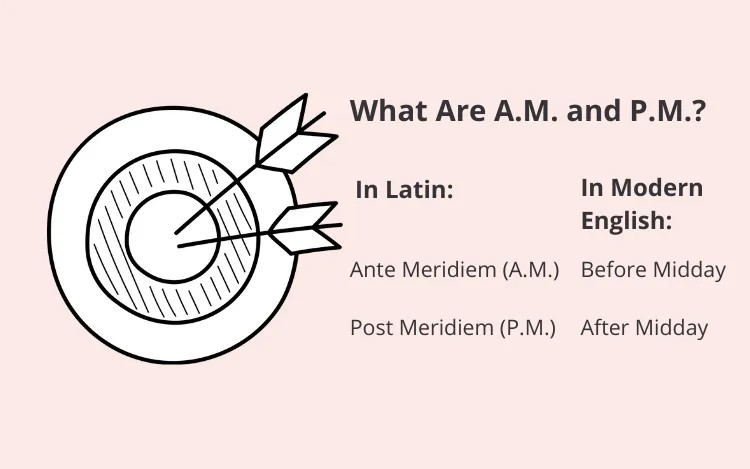When it comes to pinpointing midday, you might find yourself wondering about the best way to express it in writing. Is it 12 p.m., 12 noon, or simply noon? Knowing the correct way to refer to this time is essential for clear communication, whether you’re scheduling an event or writing a report. Clarity in time references avoids confusion and ensures everyone is on the same page.
This article will clarify the meaning of noon, delve into the use of 12:00, 12 p.m., and provide practical examples for using these terms correctly. We’ll also share a helpful tip to remember the proper application of 12 p.m. in your writing.
Decoding Noon: The Definition of Midday
Noon is universally understood as midday, marking the middle of the day and precisely twelve hours after midnight. In the 24-hour cycle, noon signifies the start of the twelfth hour, distinguishing it from midnight, which is the exact point where one day transitions into the next.
To understand if noon falls under a.m. or p.m., we need to examine the meaning of these designations.
 Understanding AM and PM: Ante Meridiem and Post Meridiem Explained for Noon Time
Understanding AM and PM: Ante Meridiem and Post Meridiem Explained for Noon Time
“A.m.” is an abbreviation of “ante meridiem,” and “p.m.” represents “post meridiem.” These Latin phrases directly translate to “before midday” (a.m.) and “after midday” (p.m.).
Since noon is midday, it logically cannot be before or after midday. Therefore, in a strict sense, noon is neither a.m. nor p.m. Despite this, it’s common in casual writing and speech to see noon referred to as “post meridiem” or p.m., particularly when using time formats like 12 p.m.
Using “noon” or “midday” is your best approach when absolute precision is needed, ensuring there’s no ambiguity about when an event is scheduled or occurred.
While it might seem helpful to write “12 noon” for extra clarity, most style guides, including the Chicago Manual of Style, advise against this redundancy. “Noon” inherently means 12 o’clock in the middle of the day, making the “12” prefix unnecessary.
Understanding 12:00 in Time Formats
The interpretation of 12:00 depends on the type of clock you are using. On an analog clock, 12:00 can represent either noon or midnight, requiring the use of a.m. or p.m. to specify whether it’s midday or midnight.
Generally, a.m. or p.m. is determined by the hour that follows 12. The hour immediately after noon is in the p.m. period, making “12:00 p.m.” a common way to refer to noon. Conversely, the hour after midnight falls into the a.m. period, hence “12:00 a.m.” denotes midnight.
In contrast, when using a 24-hour clock, digital clock, or military time, 12:00 unequivocally represents noon or midday. Military time also denotes noon as 12:00 p.m., although the “p.m.” is technically redundant since 12:00 in military time is always noon. However, including “p.m.” is standard practice in military timekeeping.
It’s also worth noting that military or 24-hour time can be written without a colon; for example, 12:00 can be expressed as 1200 hours or 1200 hr.
When writing “12:00 p.m.,” omitting the zeros for brevity is also acceptable. For times precisely on the hour, “12 p.m.” is a perfectly valid and more concise alternative to “12:00 p.m.”
Examples of Using 12 P.M. to Indicate Noon
Here are sentences illustrating the use of 12 p.m. to mean noon:
- The conference call is scheduled for 12 p.m., so please join promptly.
- Astronomers often note solar events occurring around 12 p.m. local time.
- The outdoor market opens at 9 a.m. and closes at 12 p.m. every Saturday.
- “Let’s aim to meet for lunch at 12 p.m. tomorrow,” she suggested.
A Simple Trick to Remember 12 P.M. Is Noon
A helpful way to remember that 12 p.m. refers to noon is to understand the a.m./p.m. cycle. Times from 00:00 to 11:59 a.m. are all in the morning period, leading up to noon. Therefore, any time from 12:00 to 23:59 falls into the p.m. period, covering afternoon and night. Think of it this way: 12 p.m. is the very beginning of the ‘post meridiem’ period, right at midday.
When reading time references using 12 p.m., consider the sentence’s context to confirm it means noon. Look for cues related to midday activities or daily schedules. Is the context related to lunch, midday sun, or the middle of a workday? Also, check if the 24-hour clock format is used elsewhere in the document, which might give you a better reference point.
While “noon” offers the clearest and most direct way to denote midday, using “12 p.m.” or “12:00 p.m.” is widely understood and perfectly acceptable, especially in informal communication. Understanding “What Time Is Noon” in its various formats ensures your communication is clear and accurately understood.
